“The Wood Awards”
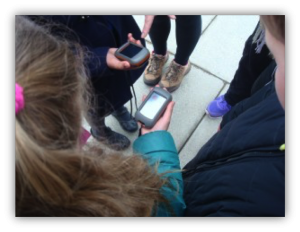
Captivating children to learn science in the great outdoors is highly valuable. By hooking their interest through the concept of geocaching, a new avenue for learners is opened. Children are able to take ownership of their learning, increasing engagement and enjoyment. Come with us on this journey and see for yourself!

Switch on your GPS and off we go to a PLACE RESPONSIVE learning environment on the University campus. The learning activity inside the cache is responsive to the woodland environment as the wildlife included can be found here. The wildlife may not always be present, as we found out on our P4 trial visit. But this provided for more learning opportunities, one child surmised that the reason we couldn’t find a grey squirrel was “because of the noise we were making.”
Our geocache is aimed at introducing children to food webs, scientific terminology and the concept of interdependency between plants and animals. The geocache can be adapted to suit your needs, for example; change sorting categories to invertebrates/ vertebrates or to a “minibeast hunt” which can work well within any woodland or school grounds.
Geocaching can build confidence and group working skills along with scientific knowledge in a place based learning environment.
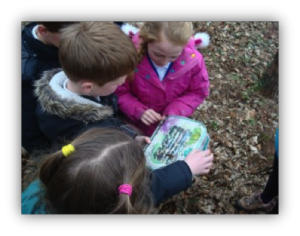
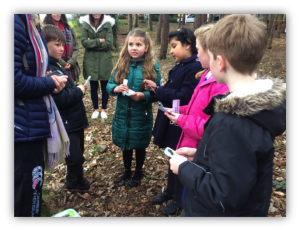
LEARNING ACTIVITY
Once the children find the cache they complete a ‘mission’ as follows:
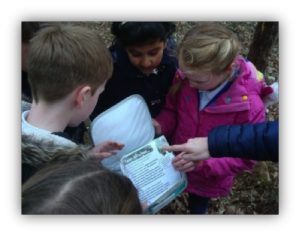
- Living things sorting game – Producer/herbivore/omnivore/carnivore/detritivore; identify and categorise cards into groups. The children are given clues and help cards with pictures to allow for differentiation.
-
‘Scavenger hunt’ game. The children are to search for the animals/plants found in their group (herbivore/carnivore/omnivore/detritivore/producer).
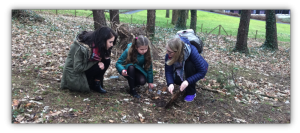
-
Award Ceremony – To complete the mission, children are asked to provide definitions of all categories and to provide an example from each. Assessment cards and teacher notes are within the cache.
SUSTAINABILITY
The Big Question – What would happen to the wildlife in the woodland if one third of the trees were removed?
P4 trial day, the children offered answers of; “the animals would move out of the area” and “the wildlife would die”.
This and other questions can foster deep discussions and enable further study when back in the classroom.
P4 feedback….”I liked finding out about the omnivores”
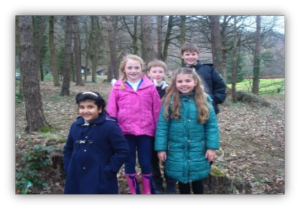
SUGGESTED FURTHER LEARNING
Photographs or further visits to record seasonal changes to allow for further learning opportunities.
Investigating habitats available in the school grounds; is it possible to design an additional wildlife area to include living things not already present? (bird boxes, wild flowers, log pile etc.).
Go global, invite your international school/ twin school to complete the same investigations and swap information found via photos, recordings, graphs, charts or power points.
Make your own class geocache for other classes to complete.
TEACHER NOTES
I have observed living things in the environment over time and am becoming aware of how they depend on each other. SCN 0-01a
I can distinguish between living and non-living things. I can sort living things into groups and explain my decisions. SCN 1-01a
I can identify and classify examples of living things, past and present, to help me appreciate their diversity. I can relate physical and behavioural characteristics to their survival or extinction. SCN 2-01a
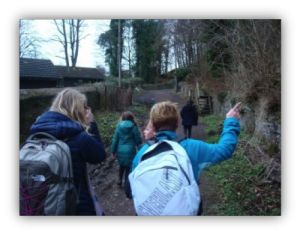

Helen Hall and Sara Whillans (EDU9S6 – 2016 – 3rd yr Primary Environment Specialists – University of Stirling )